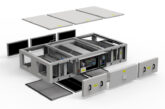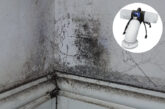
The team at Blauberg tell us more about how heat recovery ventilation works.
In an age of ever increasing efforts to conserve energy and protect the environment, technology has been evolving to meet the challenges we face with seemingly endless innovation.
The government is also playing its part by implementing new rules to the energy efficiency ratings of new builds, as well as introducing a six star code system (non-mandatory) to improve the energy efficiency of buildings and using planning to protect the environment.
Homes are now as close to airtight as can be realistically expected, incredibly well insulated and have very low carbon emissions as well as being built from sustainable products. The problem with airtight properties, however, is that they can’t ‘breathe’.

Traditionally, homes were built with air bricks, chimneys and window vents and this would ensure that the flow of air would always maintain a healthy atmosphere for the occupants.
As soon as this element is removed there’s an increased buildup of Co2 and moisture in the air which in turn can lead to condensation and eventually black mold, making for very unhealthy living conditions in your home.
Enter Heat Recovery systems – mechanical ventilation systems that not only provide a constant input of fresh air and extraction of stale, moist air but also manage to retain the air temperature in the process.
This is achieved by using the heat from the outgoing air to warm the incoming air to a very similar temperature without the two airstreams ever coming into contact with each other. This, in turn, cuts down on fuel bills by preventing the user from paying to heat their garden, whilst at the same time providing a very comfortable atmosphere.
At the very heart of every Heat Recovery system is the Heat Exchanger.
These usually consist of an interlaced series of plates that stack warm and cold airways alternately, warming the cold incoming air whilst simultaneously cooling the warm outgoing air and ‘exchanging’ the heat.
The air is moved around the ducting system by two fans: one for the extraction and one for the air supply. The unit runs continuously to provide a constant rate of air change, and the only time that this air flow changes is when the unit is boosted, either manually or automatically, via a control surface, at times of high occupancy, high humidity or odour.

The amount of extracted heat that will be returned is gauged by the unit’s efficiency, for example if your unit has an 80% efficiency and your home is heated to 22 degrees centigrade, the returning air will be 17.6 degrees centigrade and that will be heated back up to 22 deg C by the original heat source.
This represents a massive saving both financially and environmentally whilst at the same time providing a very healthy and comfortable living environment.
For more information about the range of heat recovery and ventilation solutions from Blauberg go to: www.blauberg.co.uk/en/blauberg-uk-mvhr-heat-recovery-ventilation-range








